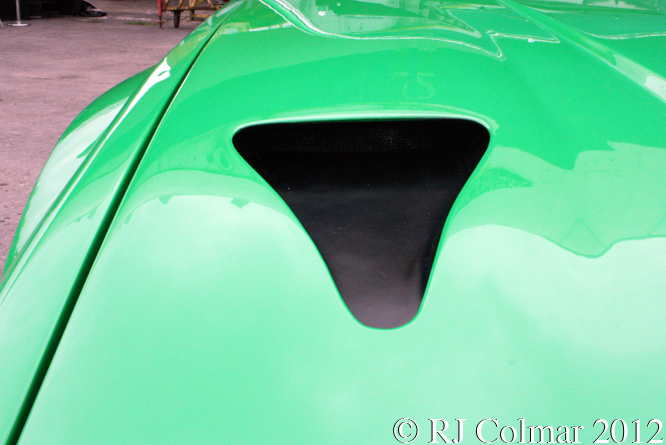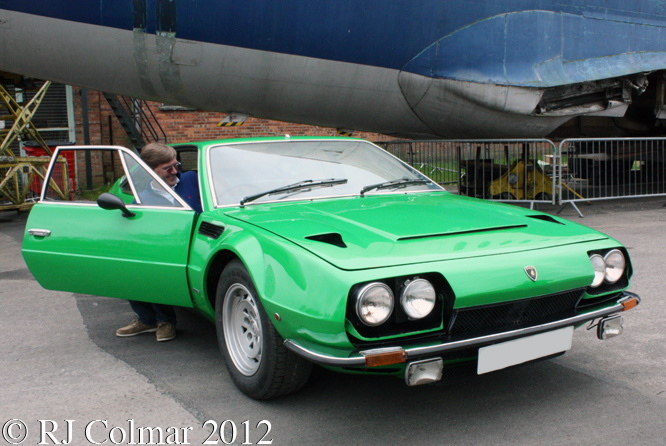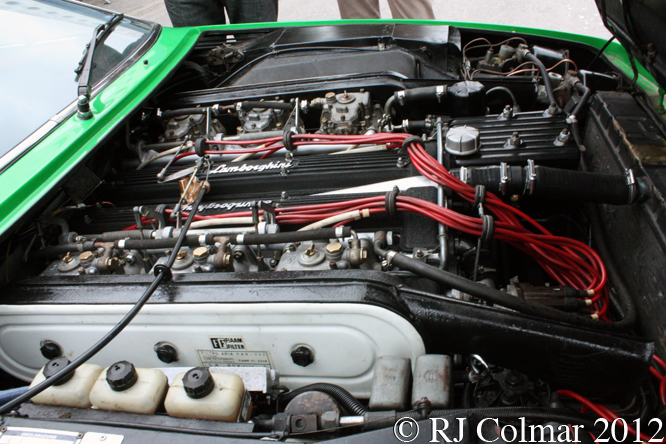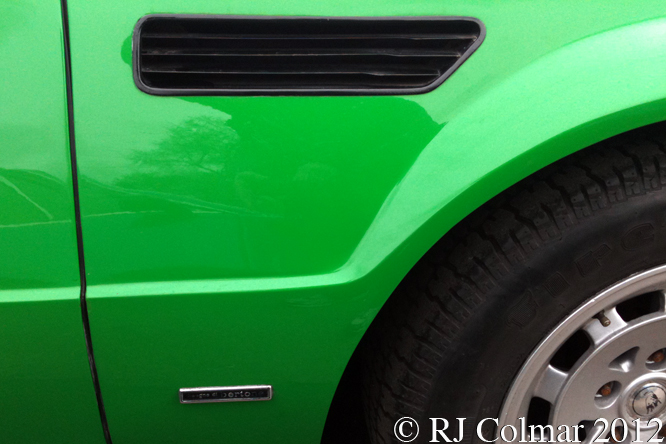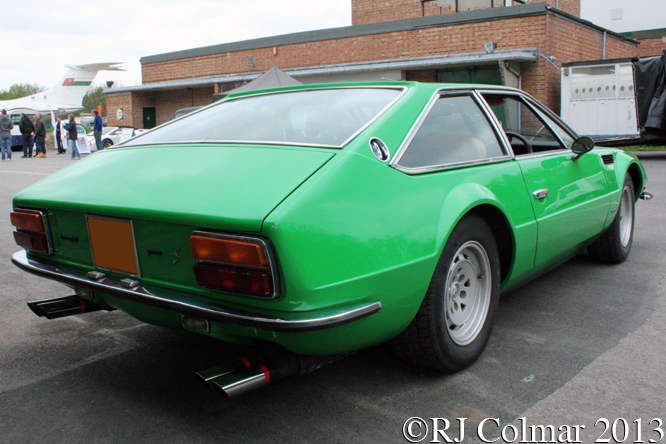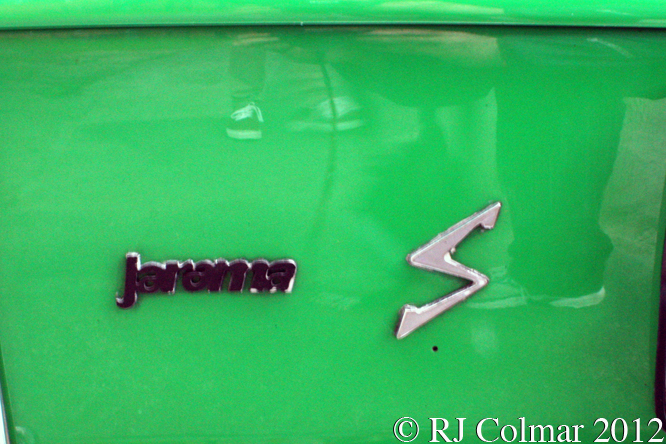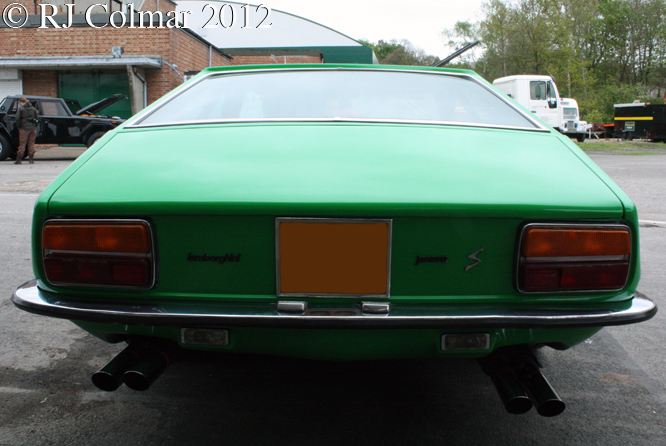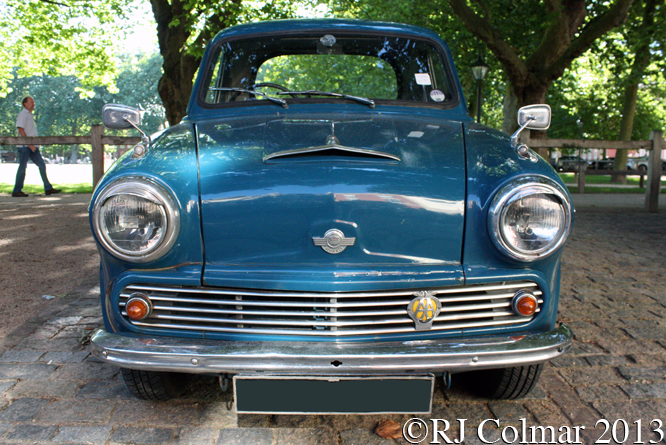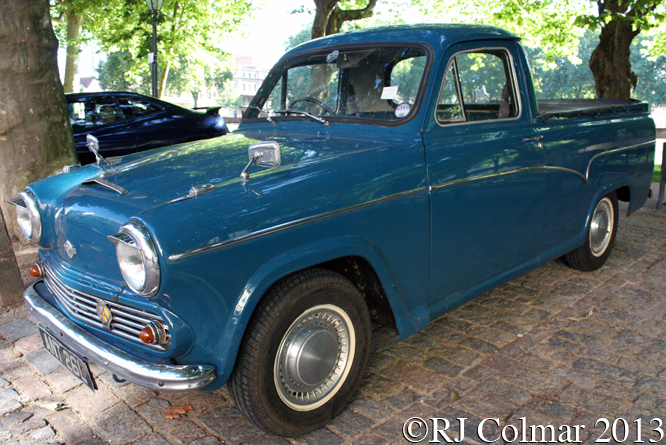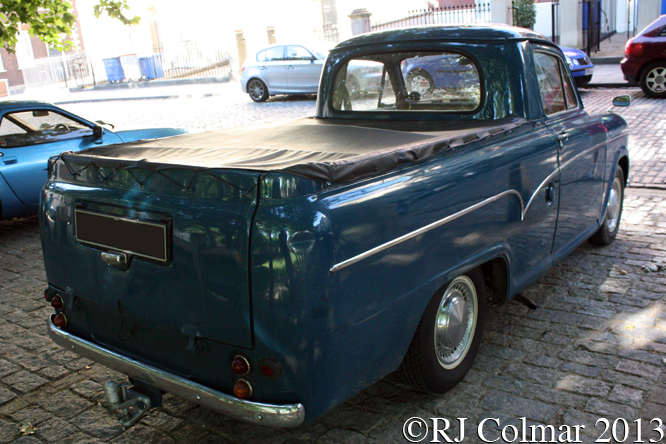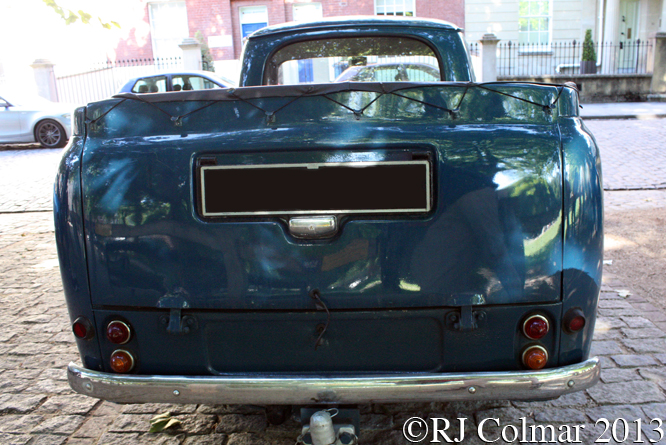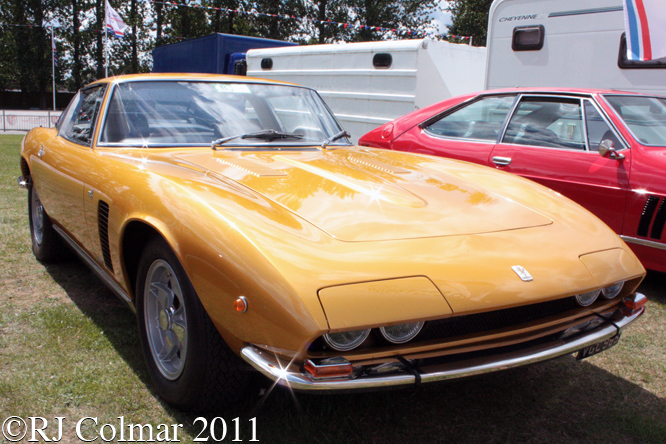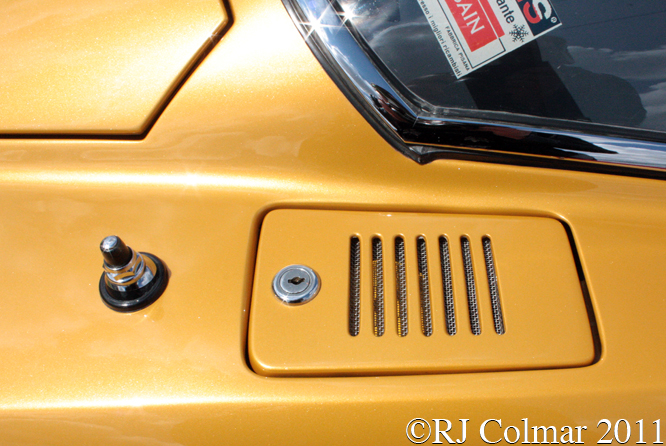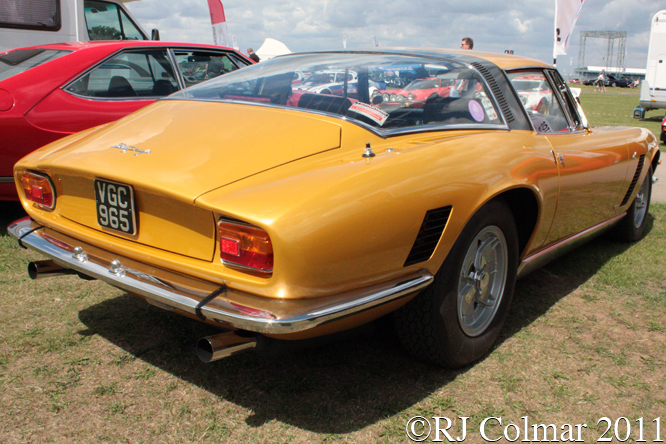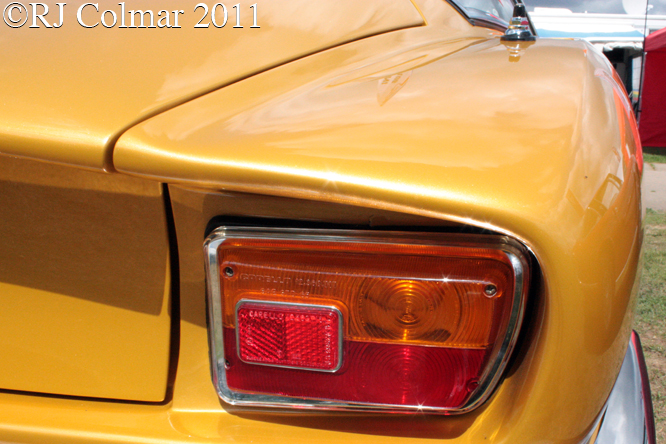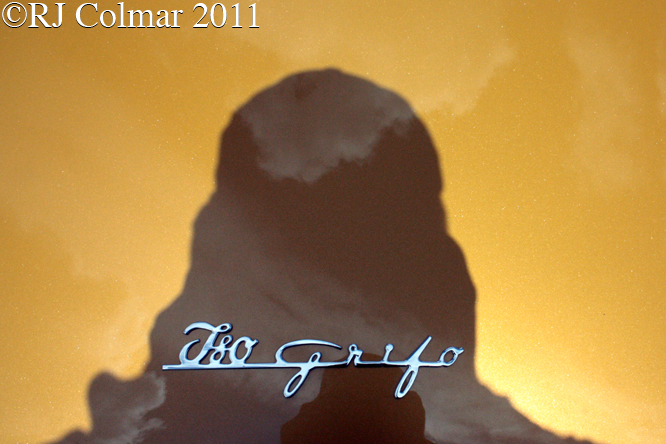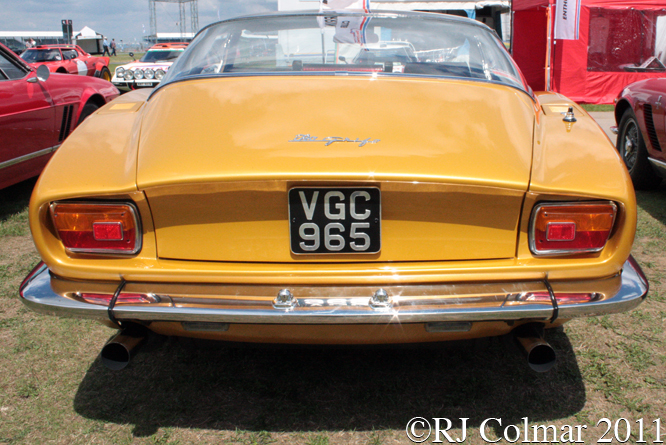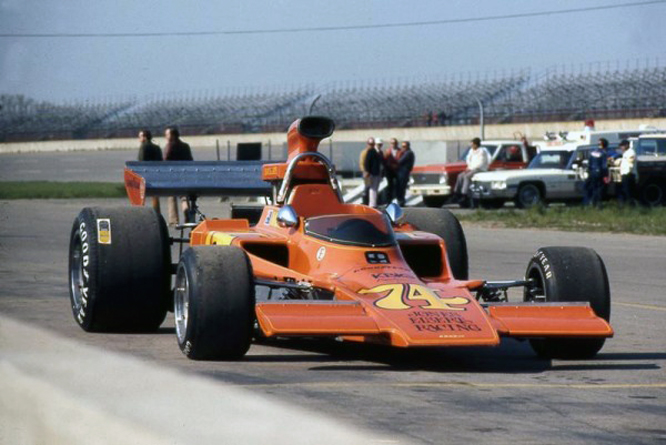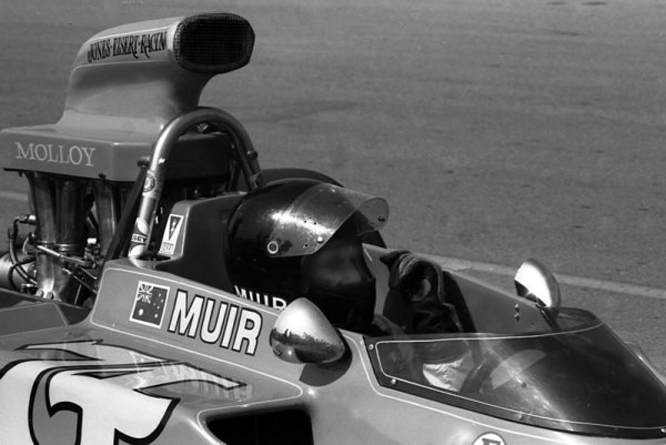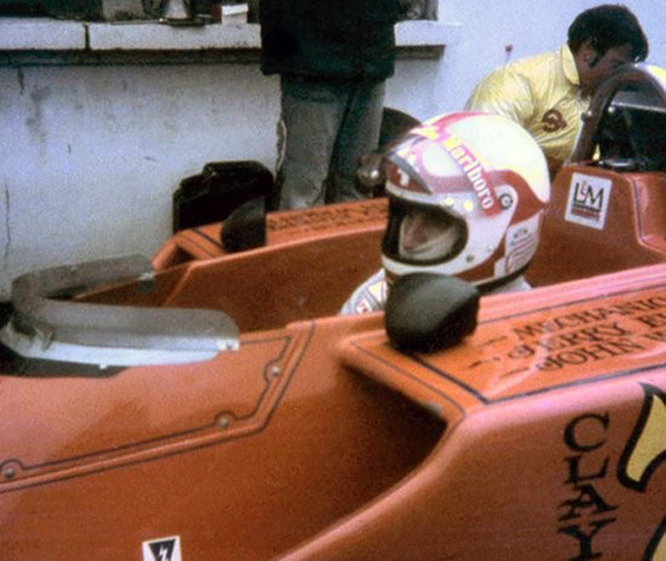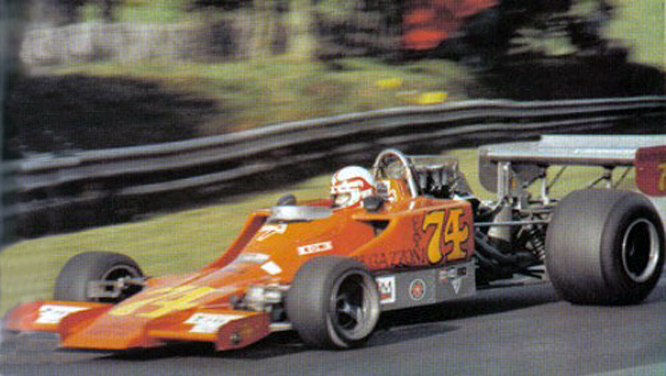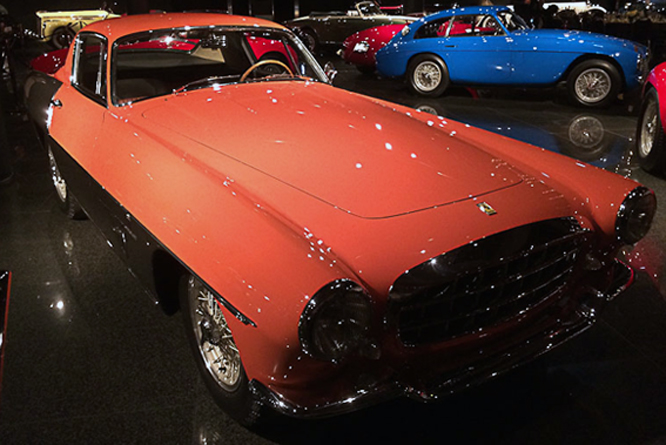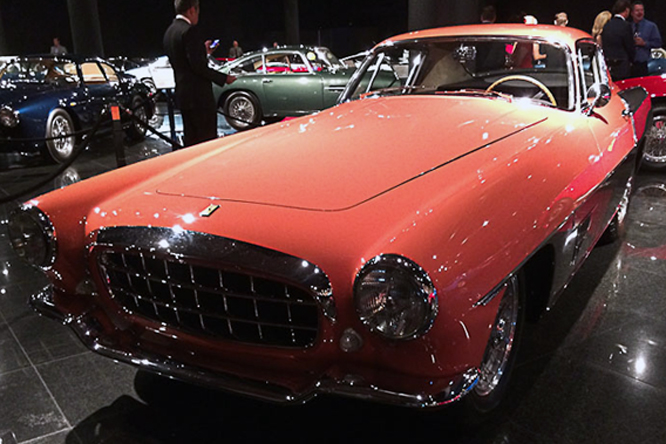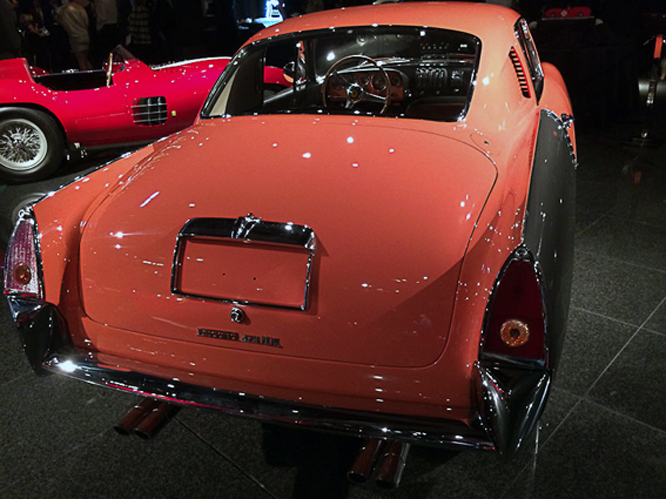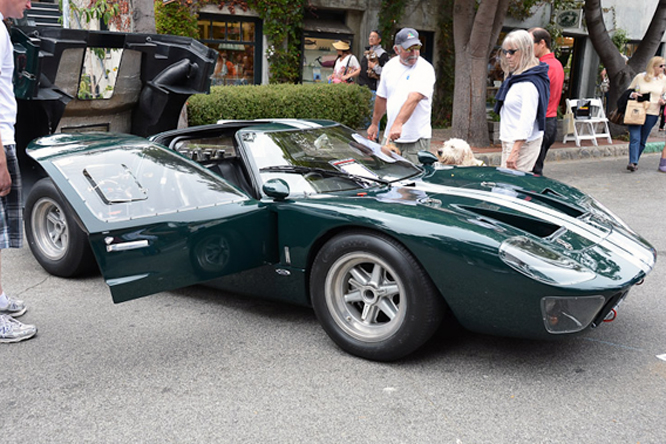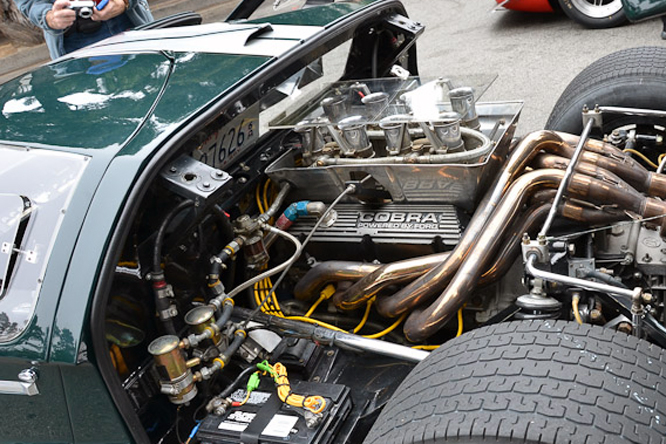On Saturday afternoon I gathered with a couple of friends from the Bristol Pegasus Motor Club and a few more from the Bristol Motor Club to marshal Test 7 of the 20th Le Jog classic car rally from Lands End to John O’Groats.
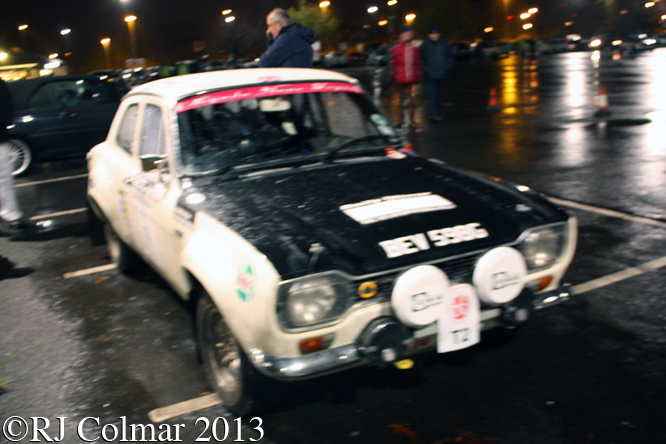
First competitor to arrive at the start area were David Bryan and Ian Humperson in this Escort Twin Cam built up as a replica of a car in which Roger Clark competed in the 1968 RAC Rally. Unfortunately David and Ian declined to take Test 7 as they had a problem with the rear suspension. However they completed the event and won blue ribands in the Touring Trial.
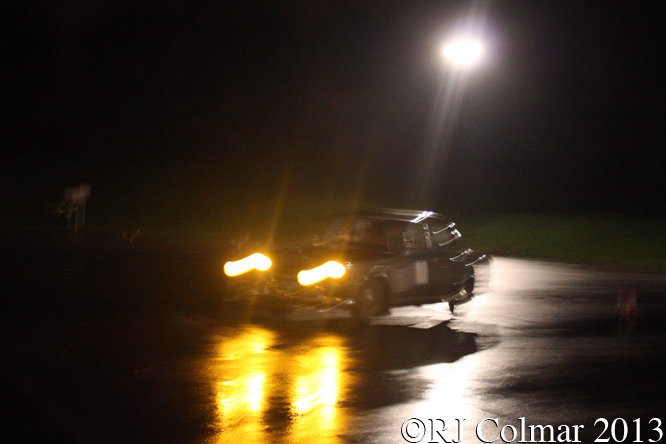
Yellow head lights were from 1939 to 1993 as much a part of French motoring life as Disque Bleu were to the French Café life, so when we saw the car coming above we could be pretty sure it was French and it turned out to be 1960 Peugeot 403 being crewed by Dutchman Pieter and Thijs Hennipman.
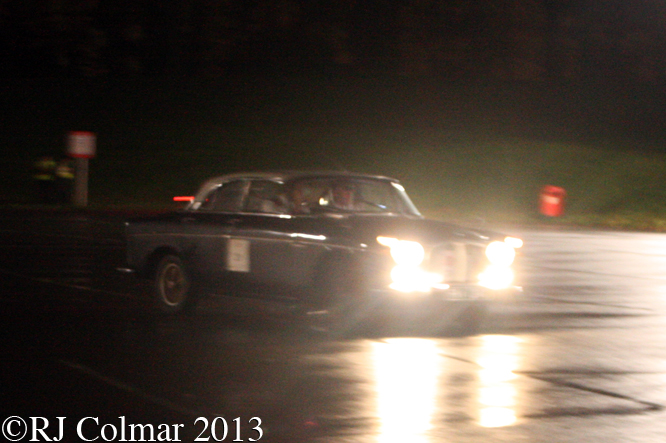
Competitors chose some unlikely if comfortable steeds for this four day event, run in the spirit of pre special stage rallying with plenty of regularity runs, navigation exercises and auto tests as run in the car park at Gordano Services. Above Nigel Botterill and Julian Marshall had one of the more comfortable vehicles in the event in the form of a 1967 Rover P5B Coupé.
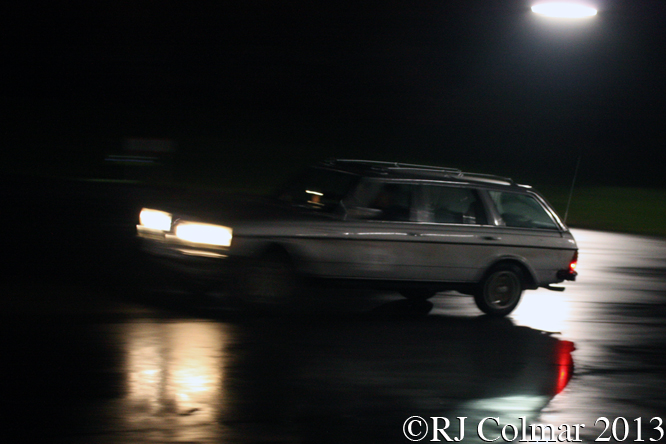
The Botterill / Marshall may have been equaled for comfort by the Mercedes Benz 280 T, but Helga and Selina Helmbold had far more space in the boot / trunk than the pair in the Rover. Seeing this vehicle compete complete with roof rails made me wonder if I might be able to use my own car in this event at some point in the not too distant future. Helga and Selina beat a Porsche 944 to finish fourth in class G2 for vehicles built post January 1975.
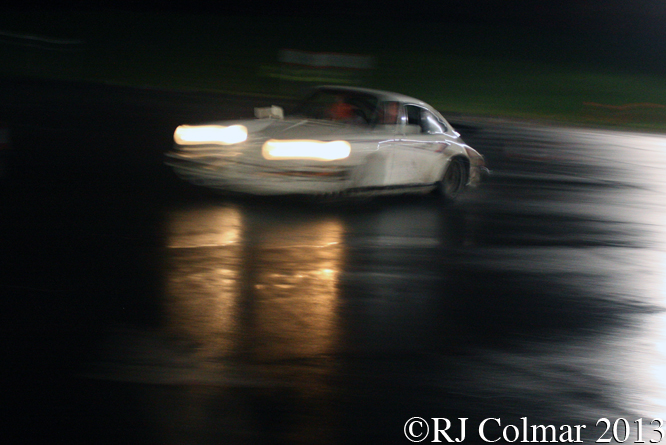
The 1978 Martini striped Porsche 911 SC crewed by Micheal and Simon Baker was probably the outright fastest vehicle in the event so it was no surprise to find them winning class G2.
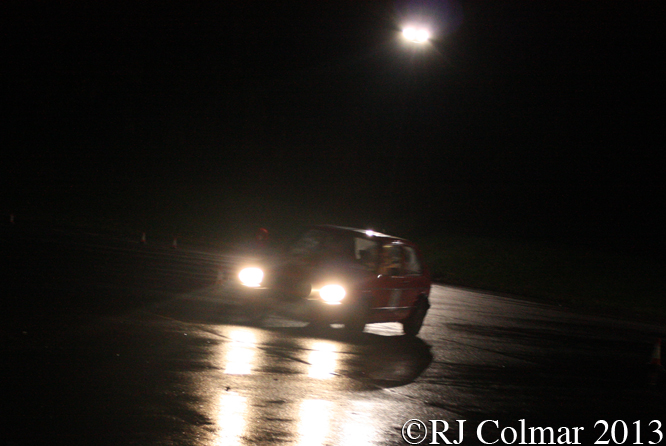
Simon Harris and Russel Joseph won the G1 class for under 2 litre cars built post January 1975 in their 1983 Volkswagen Golf GTi Mk 1 seen above.
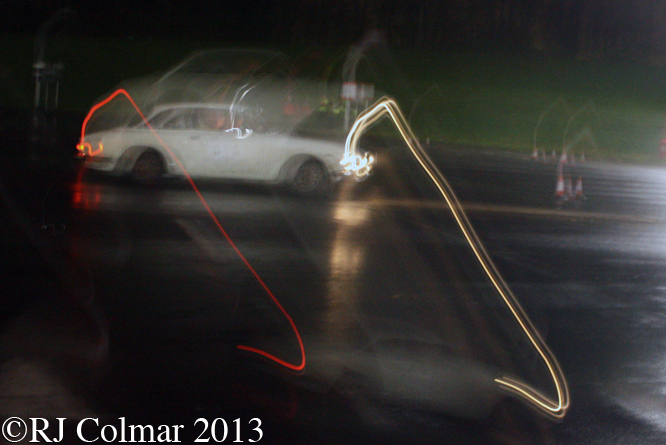
Overall winners of the event were Andrew Buzzard and Rob Lyne seen above in their 1967 ALFA Romeo Giulia Sprint GTV.
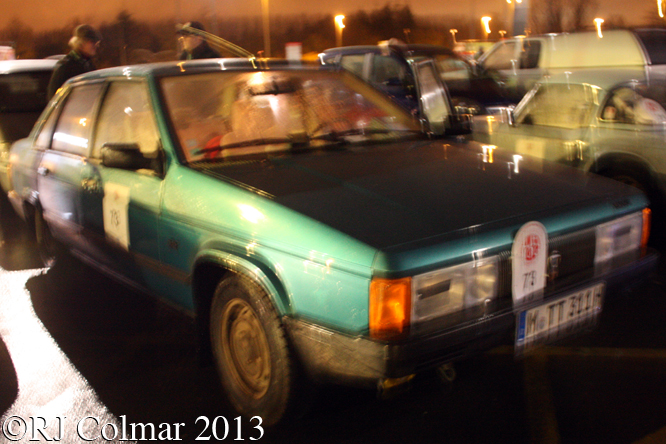
Peter Schulze and Micheal Krey probably had the least likely car on the event, it turns out Talbot Togara’s were used in the French Super Tourisieme series back in the early 1980’s. Peter and Krey won an absolute beginners award for their efforts, if you speak German you can read about their adventure on their Alte Franzosen blog.

Not only did Nigel Botterill, left and Julian Marshall, right drive an extremely comfortable car but they cut a fine dash by competing in the finest top and tails as if on their way to a wedding. Nigel and Julian kindly left me their unused meal vouchers which went along way to helping Tim and I thaw out from out marshaling duties.
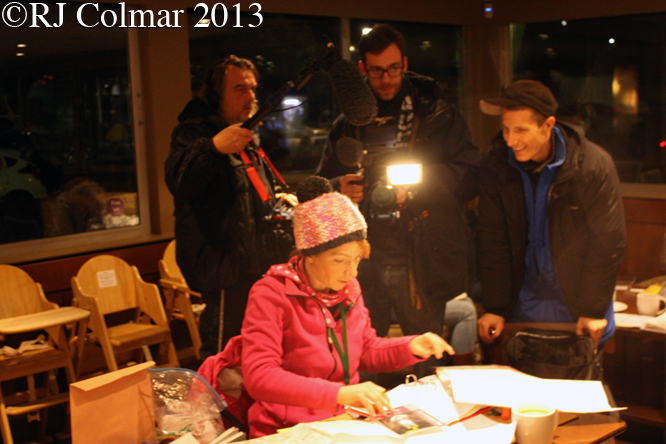
Above Sandra Wukovich catches up with some map reading for the camera’s,
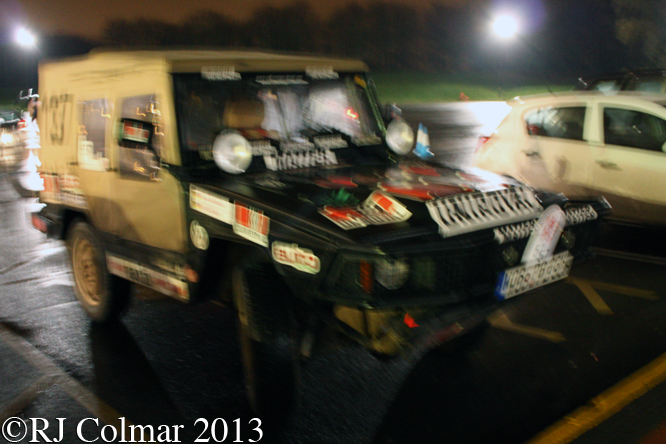
Sandra and Stefanie Edelhoff were competing in this 1979 Volkswagen Iltis a factory classic collection replica of a vehicle used in the Paris Dakar Rally the drive train of which formed the basis of for Audi’s adventure into four wheel drive competition in the early 1980’s.

Once the crew’s had completed their navigation, for the next leg of the event in Wales, they headed off into the rain from whence they came. Above Philip Haslam and Peter Fletcher depart for Wales in their Jaguar XK 120.
Thanks for joining me on this “Test 7 Gordano” edition of “Gettin’ a li’l psycho on tyres” I hope you will join me again tomorrow when I’ll be looking at a road going Ford GT40. Don’t forget to come back now !

